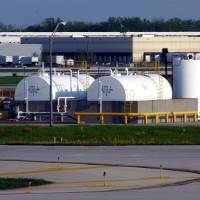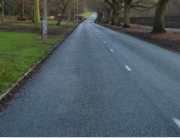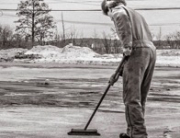 Airports are fascinating places. A place where adventures begin, journeys end, and the complexities of human relationships are very much apparent. But have you ever considered the nuts and bolts of airports? The construction of the signal tower; the departure lounge; and the runway itself? And what about the challenges faced; for safety, quality, and reliability?
Airports are fascinating places. A place where adventures begin, journeys end, and the complexities of human relationships are very much apparent. But have you ever considered the nuts and bolts of airports? The construction of the signal tower; the departure lounge; and the runway itself? And what about the challenges faced; for safety, quality, and reliability?
Building an airport is not just a design challenge – it’s a scientific feat too. The air travel industry relies on high standards across the board, but where does asphalt fit into all of this? Of course the answer lies with the runway – the backbone of the airport.
How do airports decide how to surface their runways?
Takeoff and landing are the most risky part of air travel. To minimize the dangers and ensure first-rate safety records, the runway need very careful consideration. And it all begins with the surface; what will it be made of, how will it be laid, and what is involved in maintenance? The surface of a runway needs to:
- Be hard-wearing. Chicago’s O’Hare International – the second busiest airport in the world – saw 59,692 aircraft movements in 2014 according to preliminary figures. That’s a lot of aircraft – and the runways need to withstand these high volumes.
- Be very strong. You can only imagine the force at which a jumbo jet lands on a runway – it goes without saying it’s a great deal of weight! The surface needs to withstand this extreme exertion by being strong and durable.
- Have the right amount of resistance. Skidding aircraft is certainly undesirable – and could potentially be the cause of an accident. To prevent this from happening, the runway surface needs to provide enough resistance when taking off, landing and taxiing.
- Cope with extremes in temperatures. Chicago is a case in point: the surface needs to cope with prolonged harsh winters, as well as high temperatures caused by friction as the aircraft take off and land. Few materials are made to handle such extremes.
In general, runways are made using one of two surfaces: asphalt or concrete. O’Hare International has a mixture of both, but globally speaking asphalt just edges it in terms of popularity. The reason why is quite simple; asphalt fulfills the criteria required by first-class airports around the world. In fact, 85-90% of runways at NPIAS (National Plan of Integrated Airport Systems) are surfaced with asphalt – that’s an impressive figure!
As time goes on, airport safety will show no signs of wavering. The entire aviation industry depends on a good track record where safety is concerned, and we predict that asphalt will continue to play a big part in this. In fact, as surfacing methods develop and improve, airports stand to be at the cutting-edge of the asphalt industry in the future. Watch this space!










